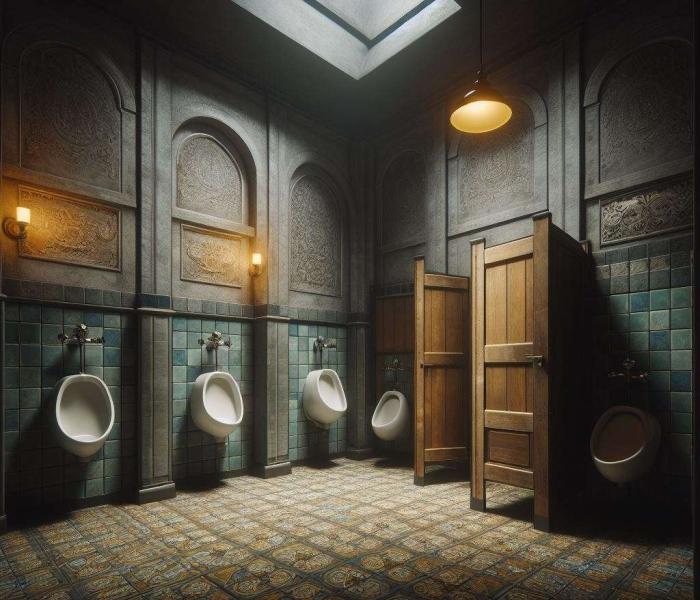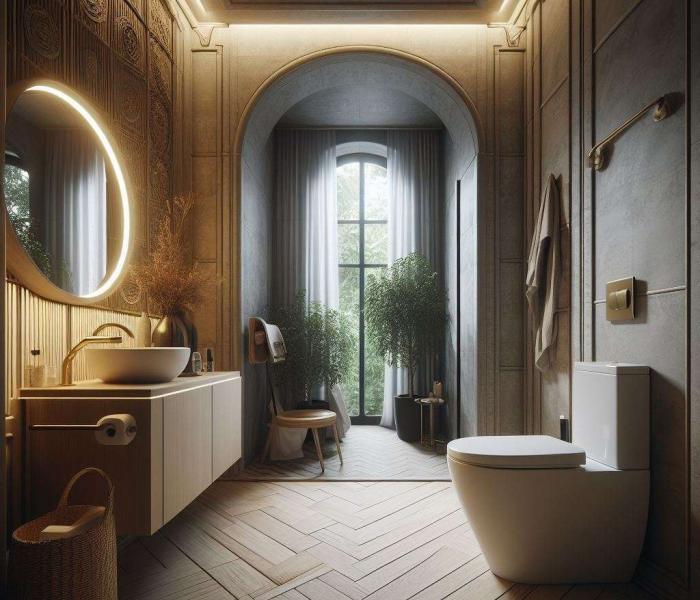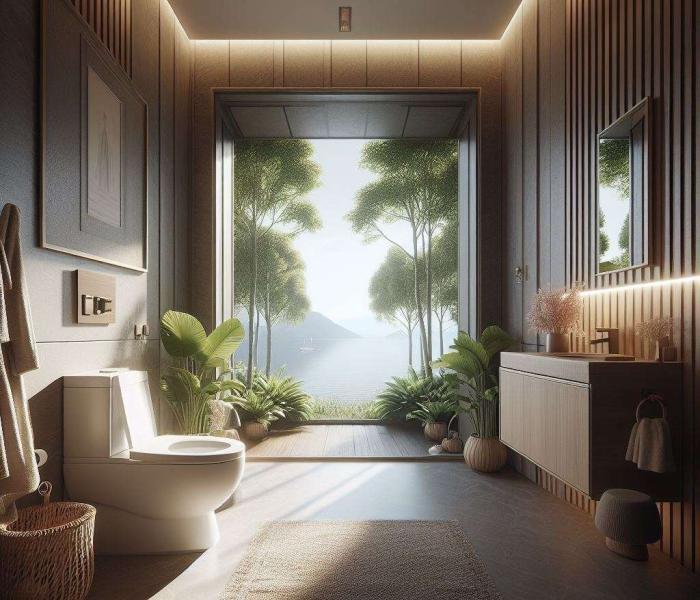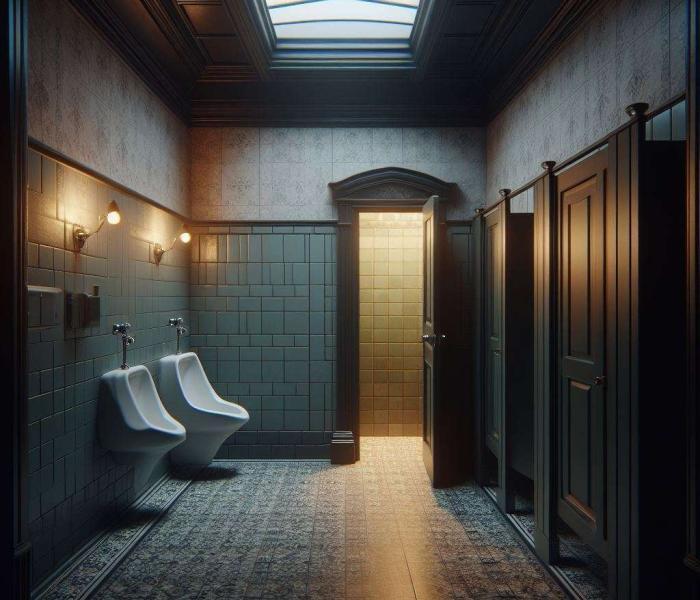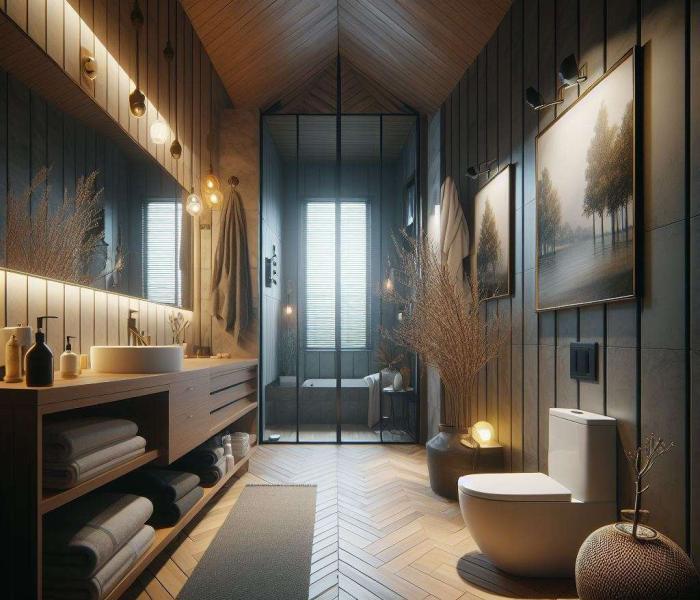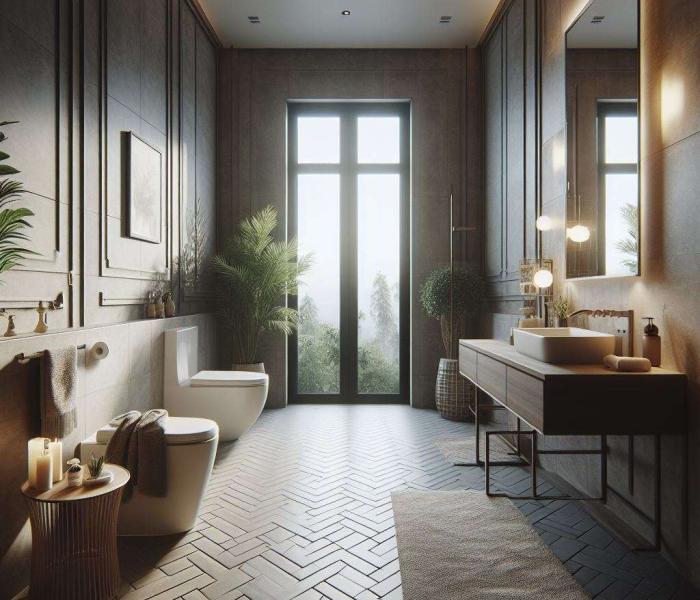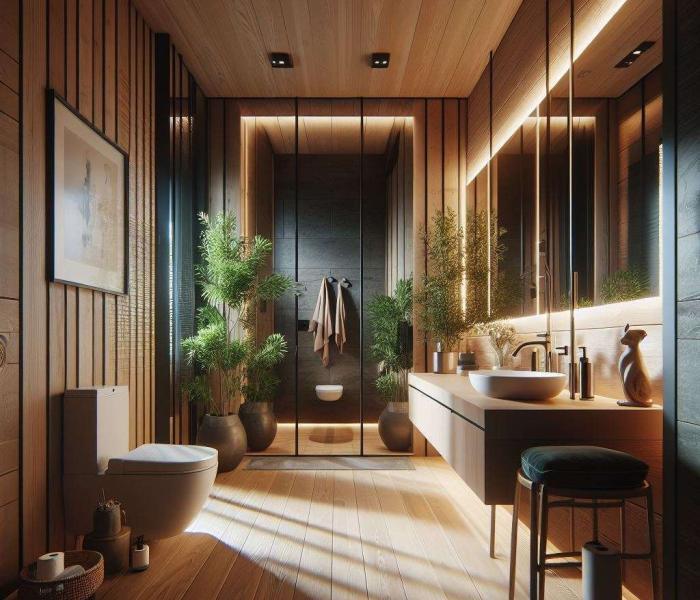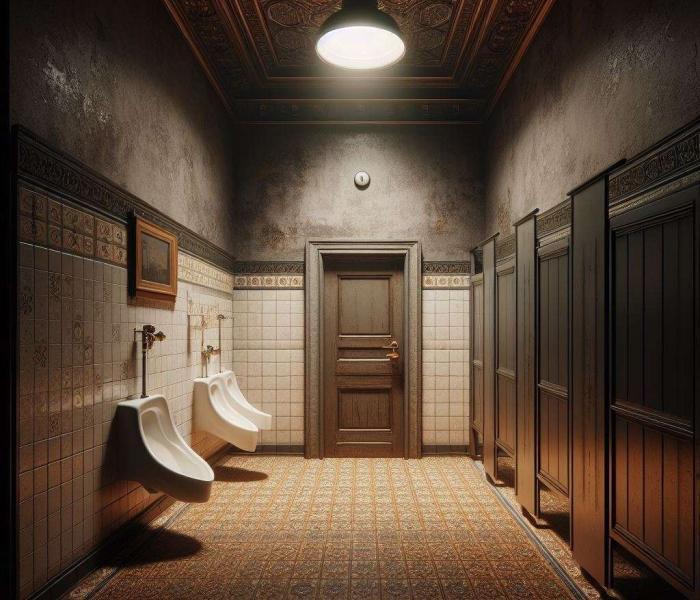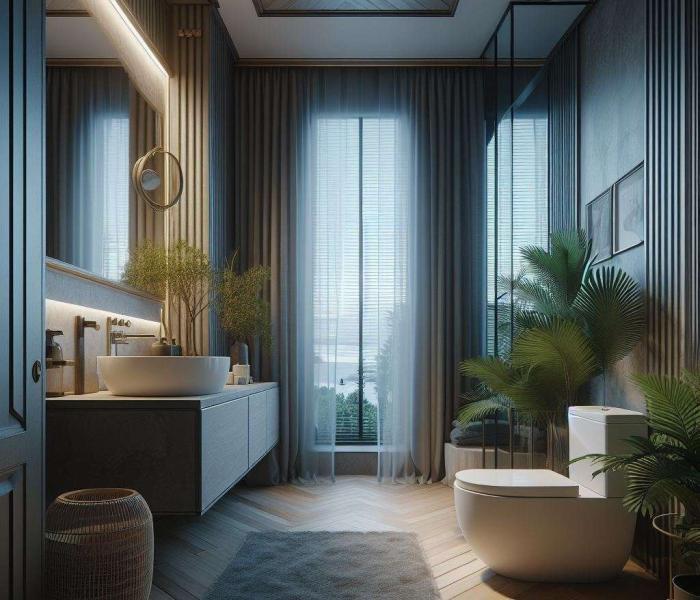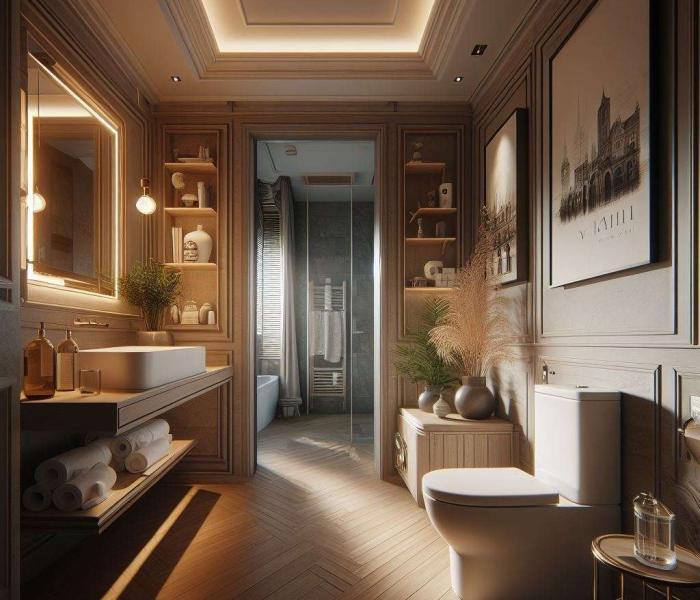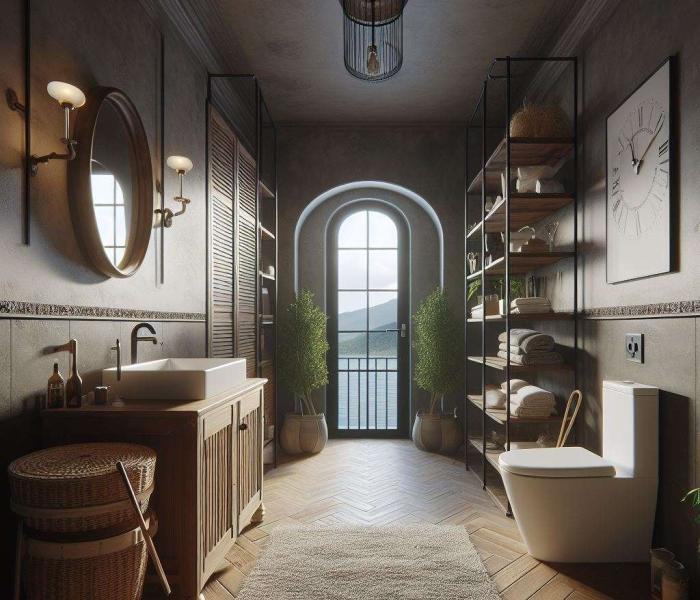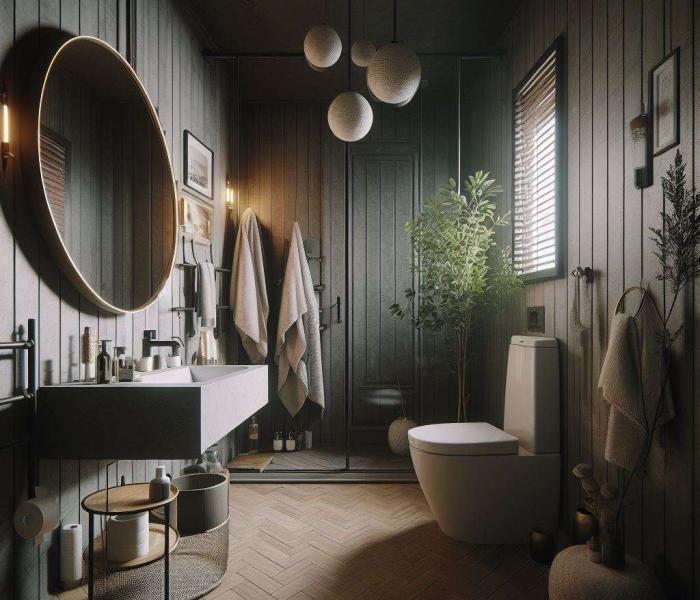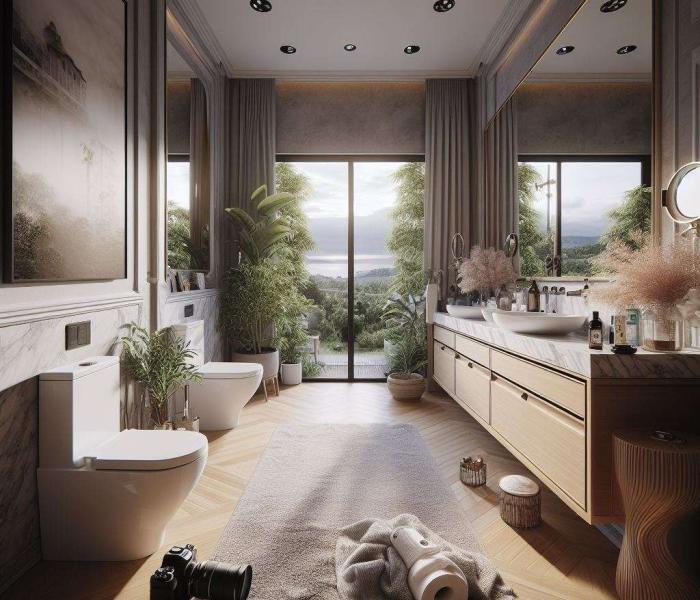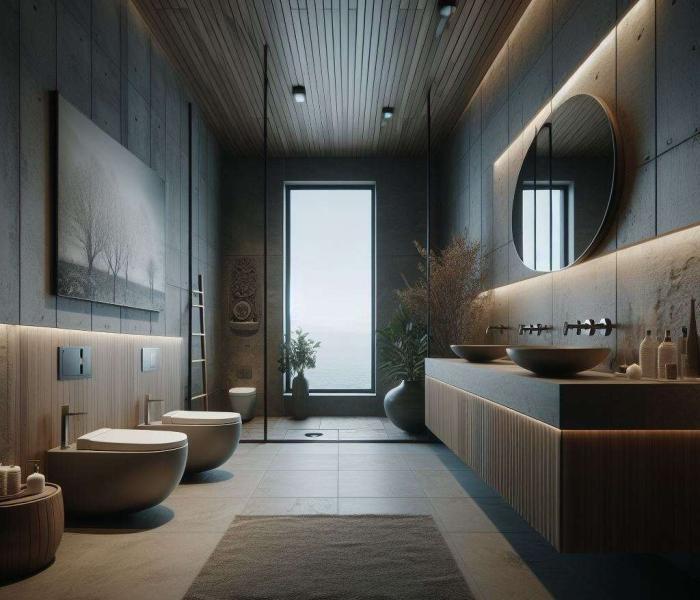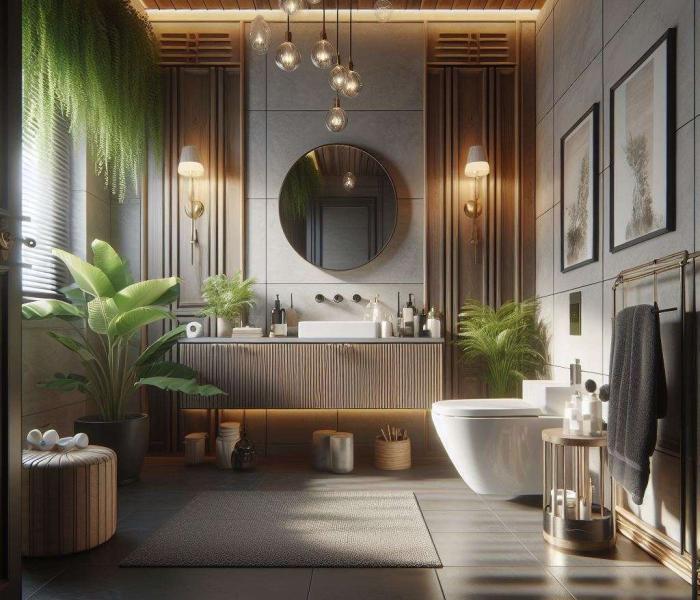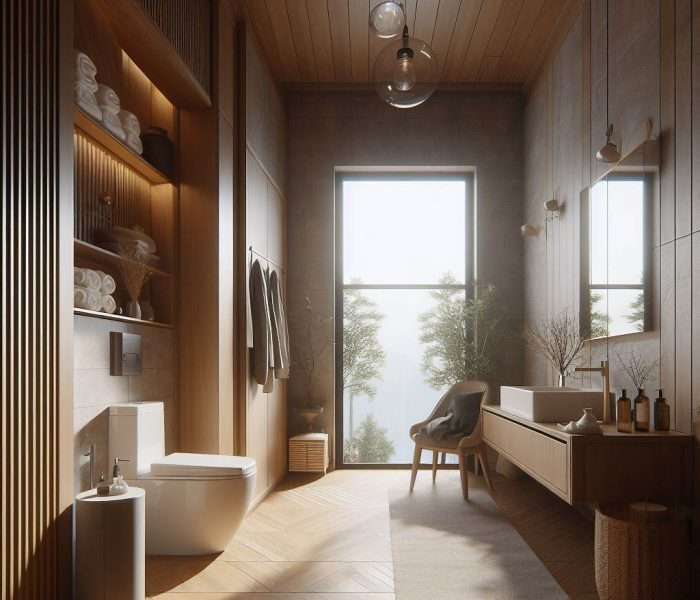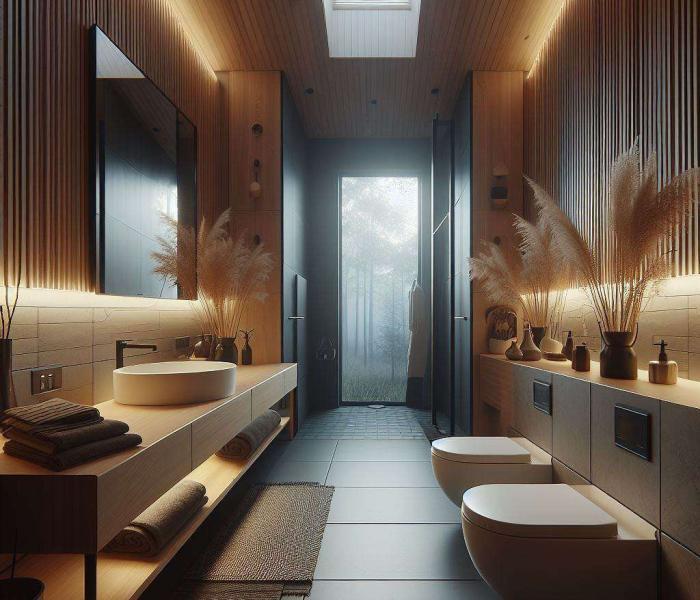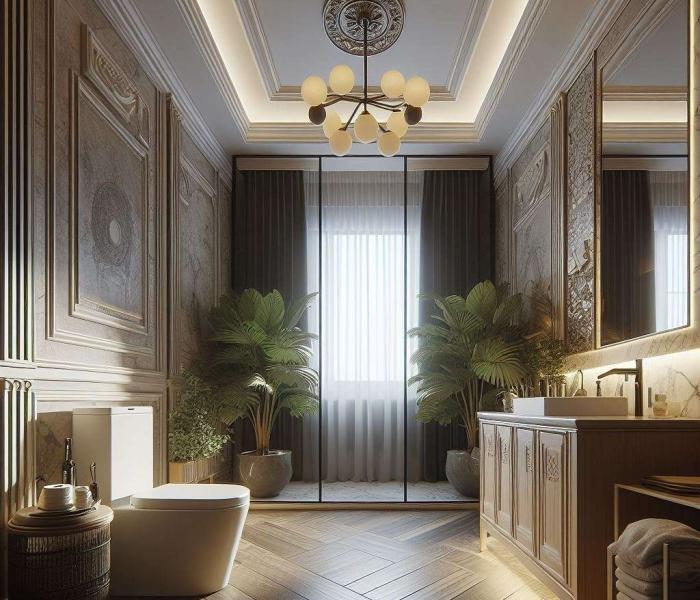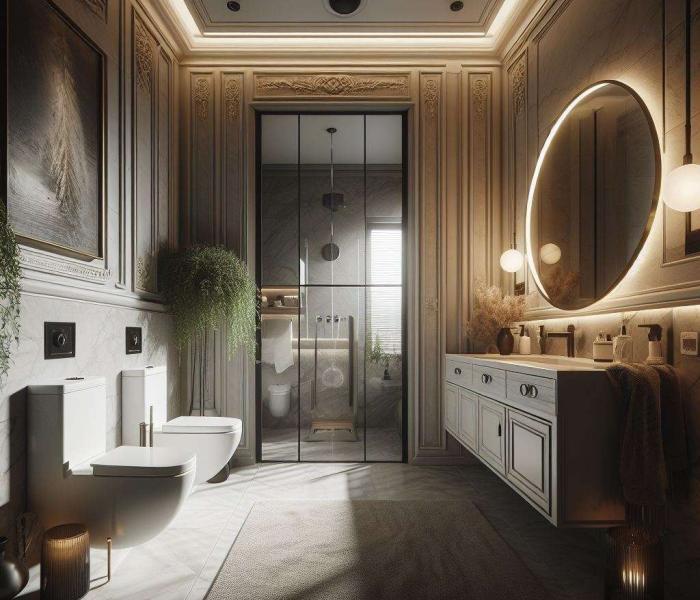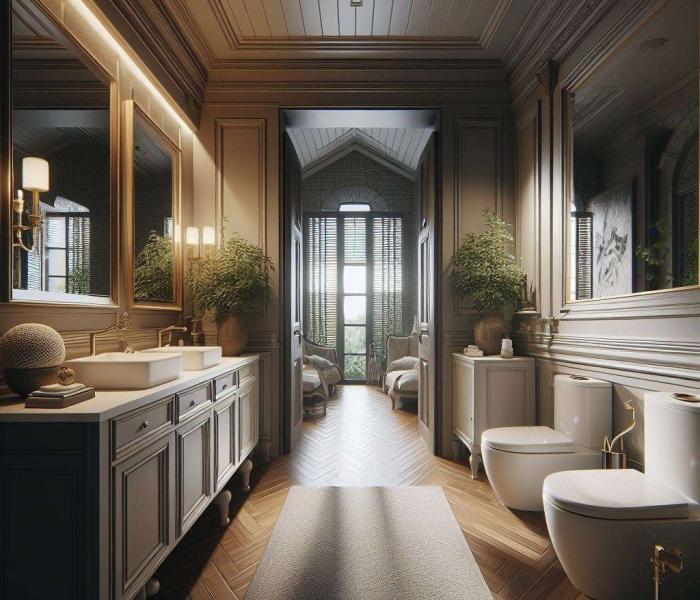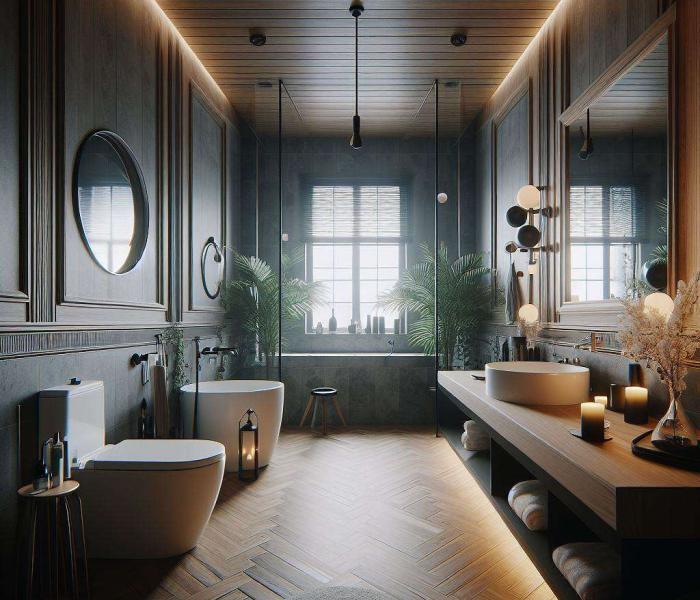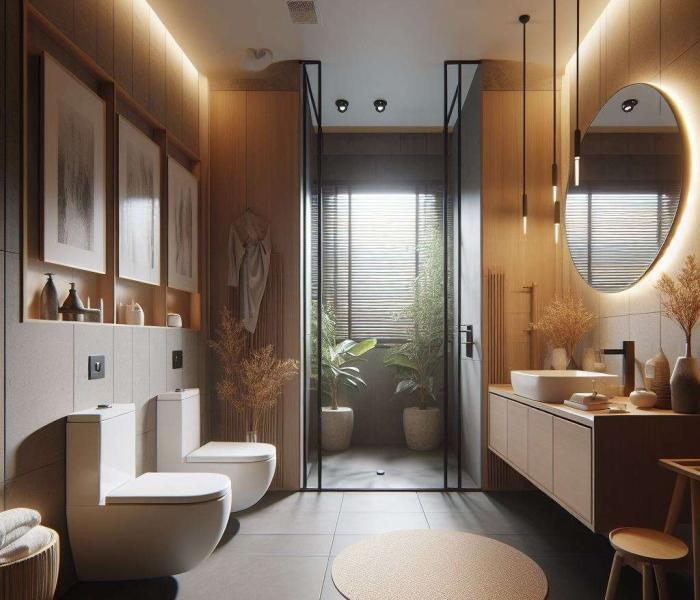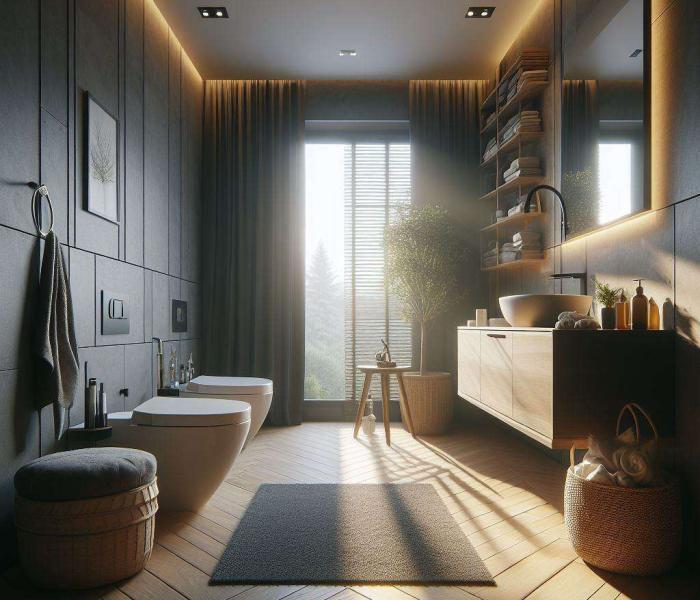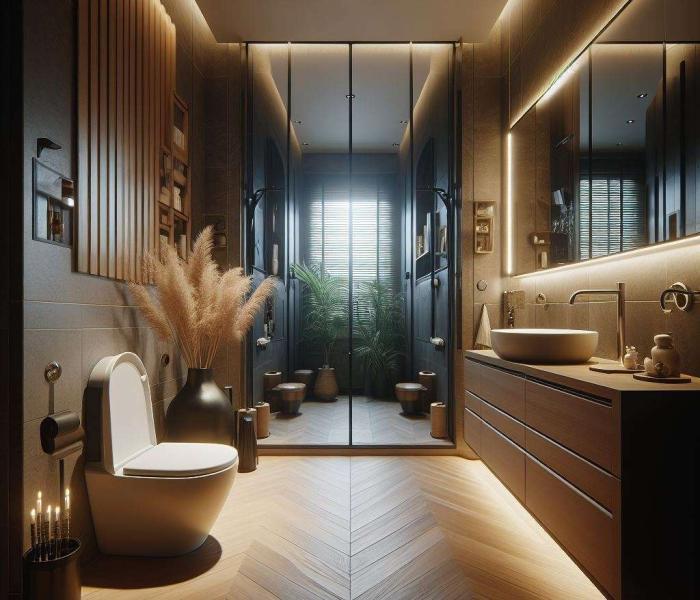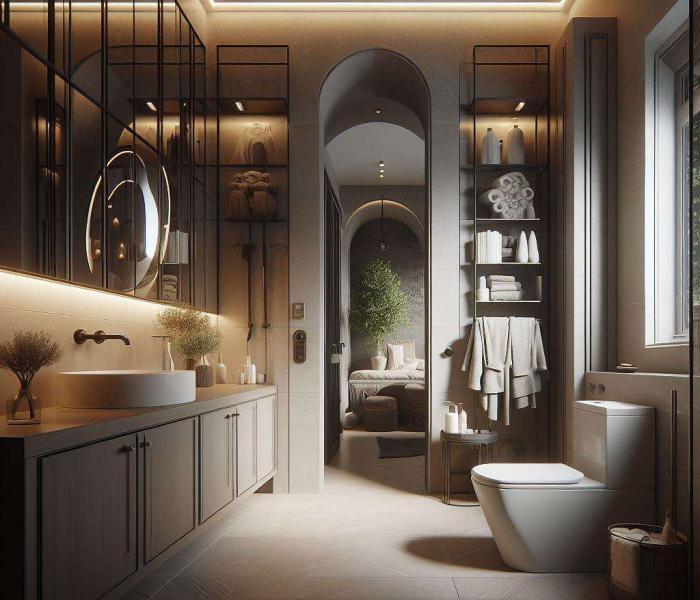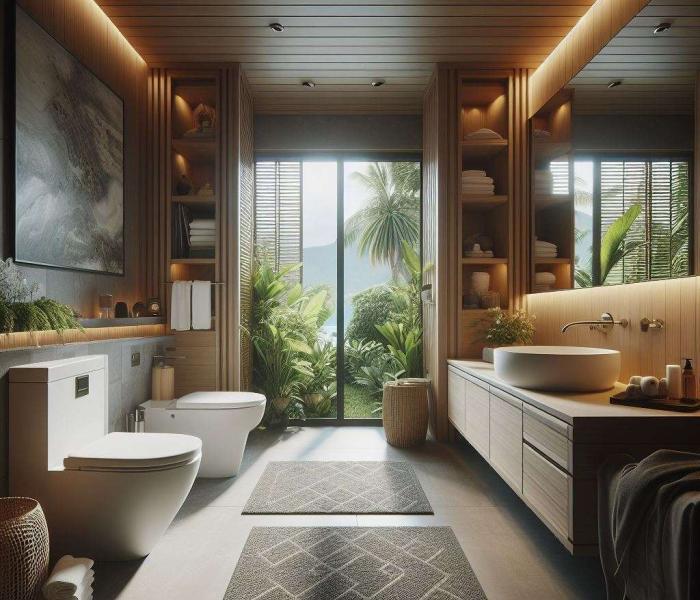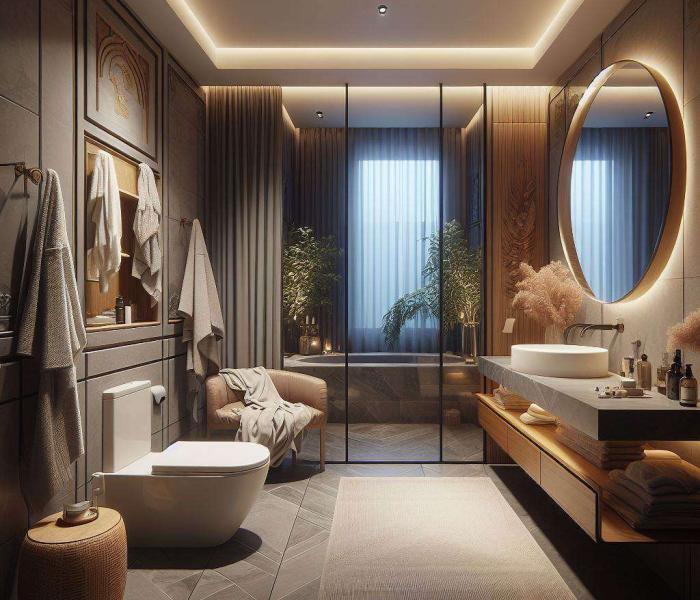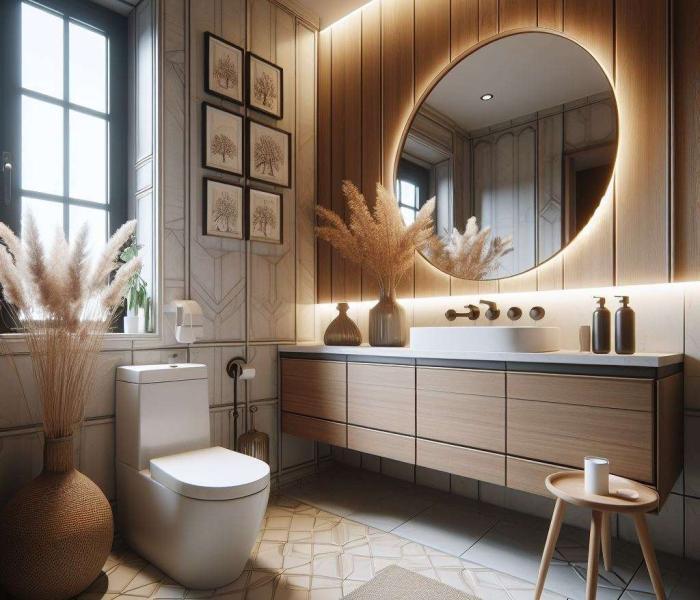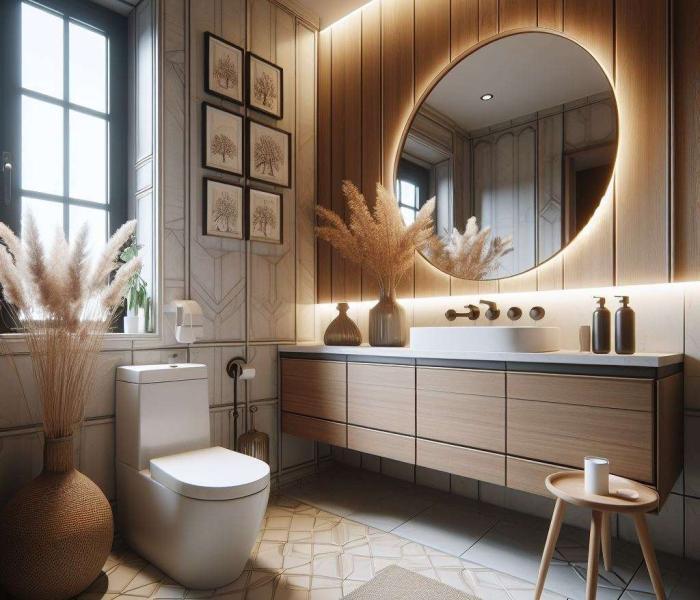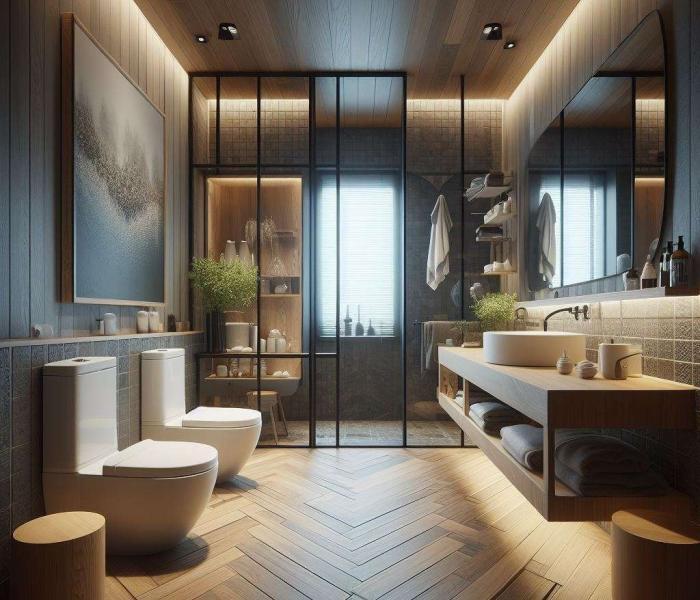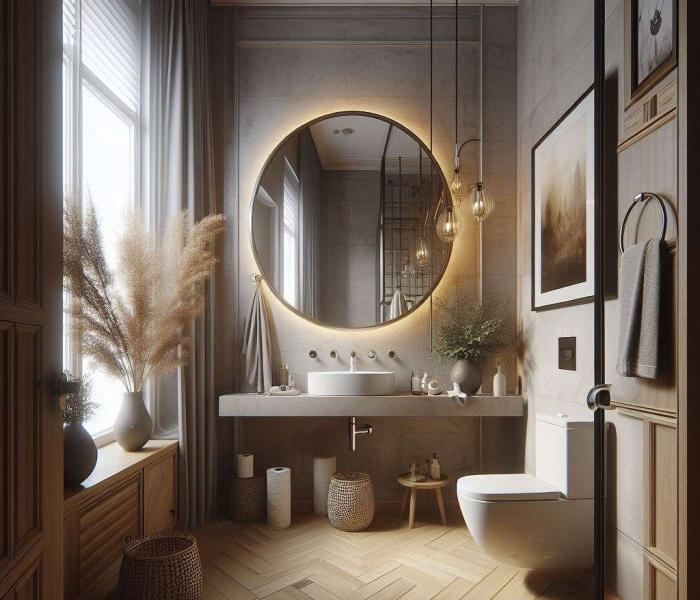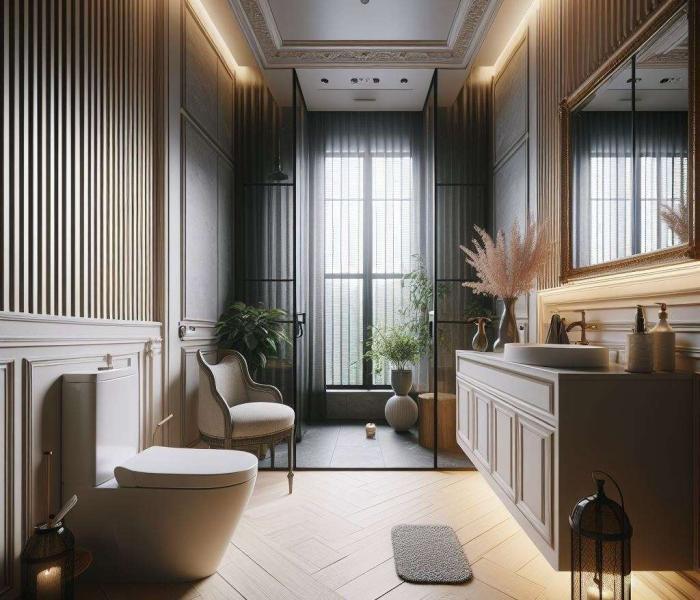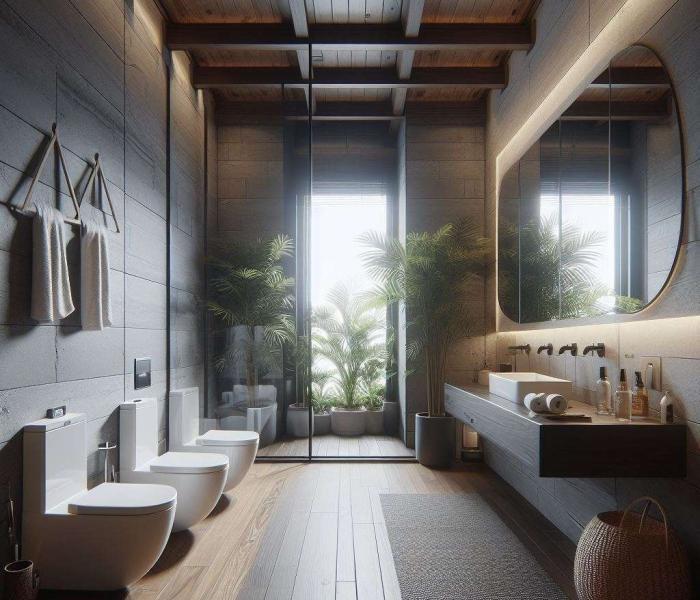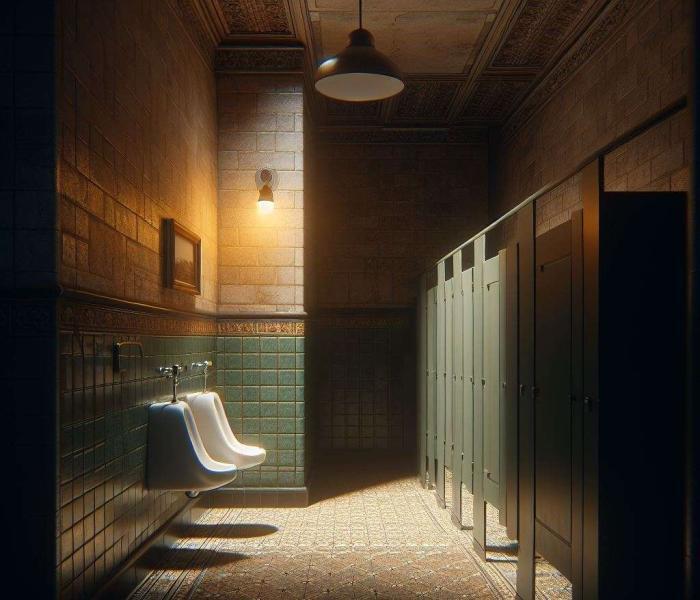AI Based Design
Toilet Design
The restroom, also referred to as a bathroom or toilet, is a space in our homes and public facilities that serves a purpose beyond mere functionality. The design of this space plays a crucial role in creating a pleasant atmosphere and contributes to the overall experience of the space user.
The selection of colors and materials is a crucial aspect of restroom design. Bright and friendly color tones can visually enlarge the space and create a positive mood. The use of easy-to-clean surfaces and high-quality materials not only contributes to aesthetics but also facilitates cleaning and maintenance of the space.
The arrangement of sanitary facilities and furniture in the restroom is also of great importance. Well-thought-out placement of sinks, toilets, and showers can efficiently utilize the space and ensure smooth use. Intelligent storage solutions help keep the space tidy and organized.
Lighting plays a significant role in restroom design, both in terms of functionality and atmosphere. Bright, well-placed light sources are crucial for safety and enable precise use of sanitary facilities. At the same time, dimmable lighting options can create a relaxed atmosphere for a soothing bath.
In summary, the design of a restroom is based on a balanced combination of functionality and aesthetics. Through careful selection of colors, materials, arrangement, and lighting, a restroom can be created that not only meets practical needs but also provides a pleasant and inviting ambiance.
What are important design aspects for a toilet?
The design of a toilet encompasses specific aspects that consider both functionality and user-friendliness. Here are some important design aspects for toilets:
- Ergonomics: The shape and height of the toilet should be ergonomically designed to provide maximum comfort to users. Adequate seat height is crucial, as is the shape of the toilet seat.
- Hygiene: The design should be easy to clean to ensure good hygiene. Surfaces should be smooth and easily accessible to facilitate cleaning, and concealed areas where dirt can accumulate should be avoided.
- Flush System: An efficient flush system is crucial for the proper functioning of the toilet. Modern toilets are often equipped with water-saving flush systems to reduce water consumption.
- Materials: The selection of materials for toilets should consider not only aesthetic considerations but also durability and resistance to moisture and cleaning agents.
- Noise Reduction: A quiet flush system and a softly closing toilet seat can help minimize disturbing noises and improve the user experience.
- Sustainability: The use of environmentally friendly materials and water-saving technologies contributes to sustainability. Some toilet models have dual flushes to further optimize water consumption.
- Design Aesthetics: The visual appearance of the toilet also plays a role. From toilet design to toilet seat, appealing aesthetics can enhance the overall impression of the bathroom.
- Installation and Maintenance: The design should be such that installation is simple and uncomplicated. Additionally, the toilet should be designed for easy repairs and maintenance.
- Accessibility: When designing toilets, it is important to consider aspects of accessibility to facilitate use for people with different needs.
- Technological Innovations: Modern toilets can incorporate innovative technologies such as heated seats, automatic lid opening, touchless flush systems, and intelligent features for improved user-friendliness and hygiene.
Considering all these design aspects contributes to creating a toilet that is not only functional and hygienic but also meets aesthetic and technological requirements.
